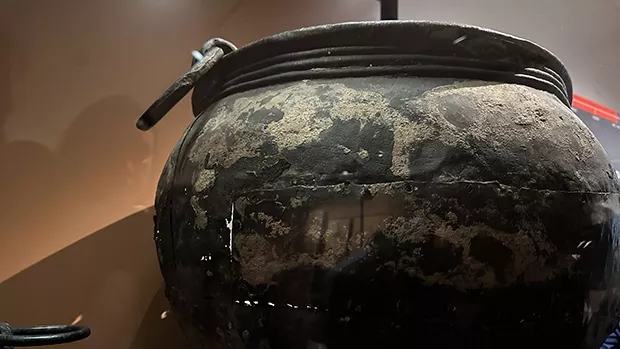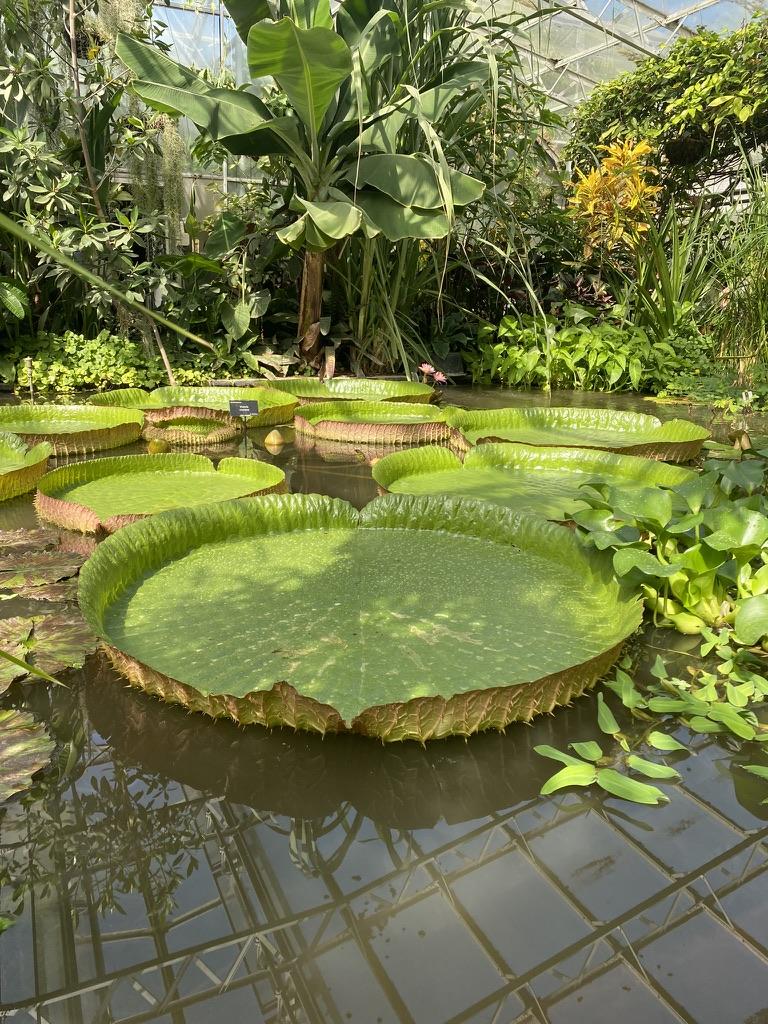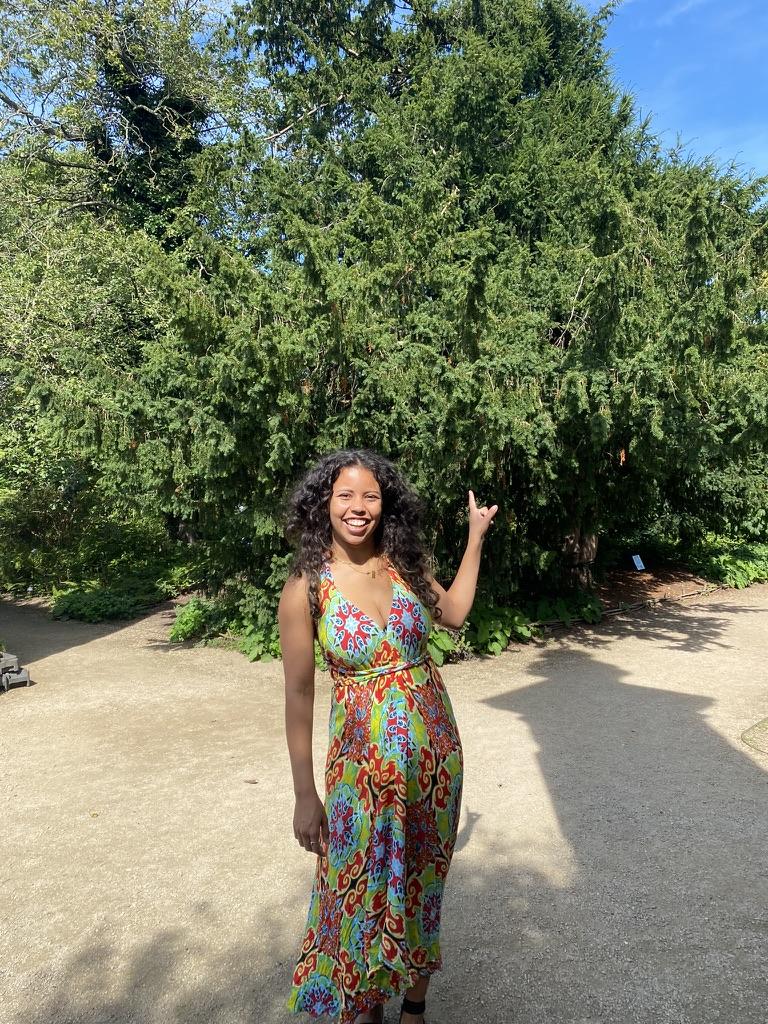
MSc student Aissa Dearing travelled The Museum of Climate Hope Trail and found a story of the relationship between humans and nature, unfinished.
In the midst of working on my Environmental Change and Management MSc dissertation, I found it necessary to uplift my spirits by getting out of the Radcliffe Camera, taking advantage of a week's worth of warm weather by venturing outside and winding through the Climate Museum of Hope. Spanning seven locations in Central Oxford, the Climate Museum of Hope is a virtual, interactive collective of objects from throughout time that depict the oneness of humanity and nature. Despite the world's powerful hindering climate action, these items serve as a reminder of how humans have always interacted with the natural world and how it will take the work of all of us to save nature from ourselves.

The Hope Trail starts at the Ashmolean Museum, with a gigantic bronze cauldron from 1100 BCE to show how food was experienced communally. It reminded me of my mom's crockpot - like the cauldron, it was passed down from an older generation, and it was often at the centre of our family gatherings, full of the warmest chilis and spiciest soups. The smell of my mother's cooking is what transforms our house into a home. I can't imagine what was served in the cauldron three thousand years ago, but it likely united families all the same. The cauldron was excavated in a nearby river - which in this context signifies it as a likely sacrifice to the divine to prevent flooding. It made me think of how distorted some of humanity's relationship is with food when we often no longer consider it a cornerstone cultural and spiritual practice. Yet, part of working towards food justice is repairing this relationship, which items like this cauldron have a key role manifesting.
Next, I ventured to the Bodleian, where a tapestry map of Oxford from 1590 is housed. It looked like a map from a fantasy world - full of lush trees and winding rivers as opposed to roads, sidewalks, and buildings. Rivers were natural motorways, taking people far and wide from city to city, therefore dominating the space on the map. Maps today are overwhelmed by roads and buildings, obscuring the natural world from our points of navigation. Seeing maps in this fashion challenged me to imagine how different ecotones were used to signal to humans to move left or right, north or south. Perhaps, especially through natural parks and reserves, there could be ways to restore this -- by creating map functions that recognise significant trees, rock formations, or water bodies as navigational tools.
I then found myself in Oxford Botanic Garden on what felt like a scavenger hunt to find the Ancient Yew Tree. This tree, almost five hundred years old (older than the country I call home), looks as though it has many a story to tell. Despite the age and wisdom it carries, the yew suffered heavily from a thunderstorm in 2020, showing us the toll that the increased frequency and intensity of natural hazards takes on even the steadiest of trees. Fortunately, with care from the staff at the Botanic Garden, the yew was able to make a full recovery. Here, history reminds us that humans have always been "the Fourth Sister" to the natural world, stewarding and rebuilding after the most severe of disasters.


After rounding out my journey in the Pitt Rivers and History of Science Museum, I came to one conclusion: We often cherish what we know. The Hope Trail illuminated how the relationship between humans and nature (and many would argue that there is no such duality) has evolved over time. When we learn of the climate crisis, we are often taught narratives of despair and hopelessness: we are taught to rely on pragmatism, political viability, and incrementalism. The Hope Trail, even as a student of environmental management, taught me new things about the intricacies of the relationship between humans and nature. How did we come to be so separate from nature, and how do we repair our relationship to it? Through the spirit of The Museum of Climate Hope Trail, we could unlock some of the key solutions to the climate crisis, whilst starting to repair our relationship with the natural world.
